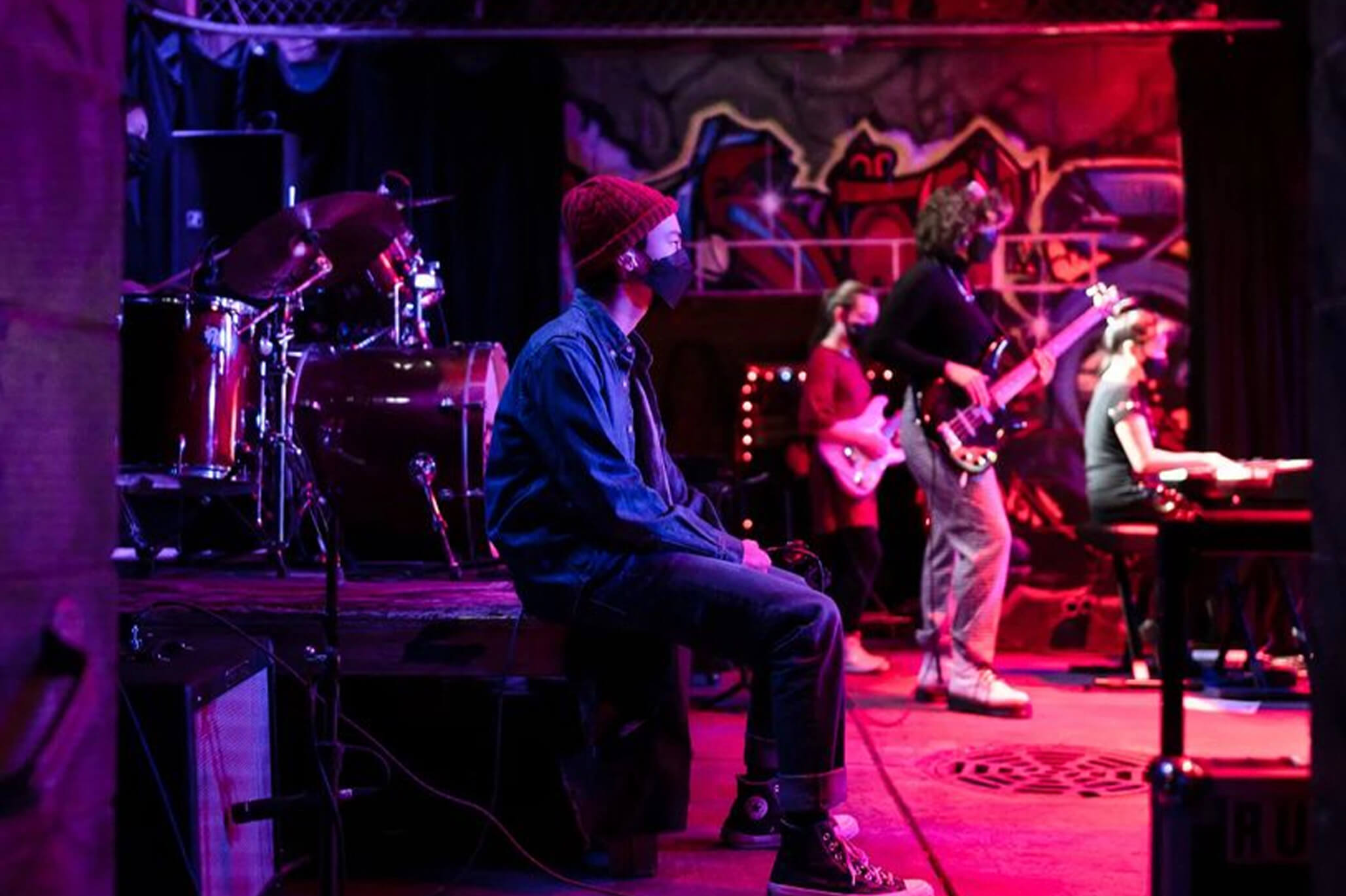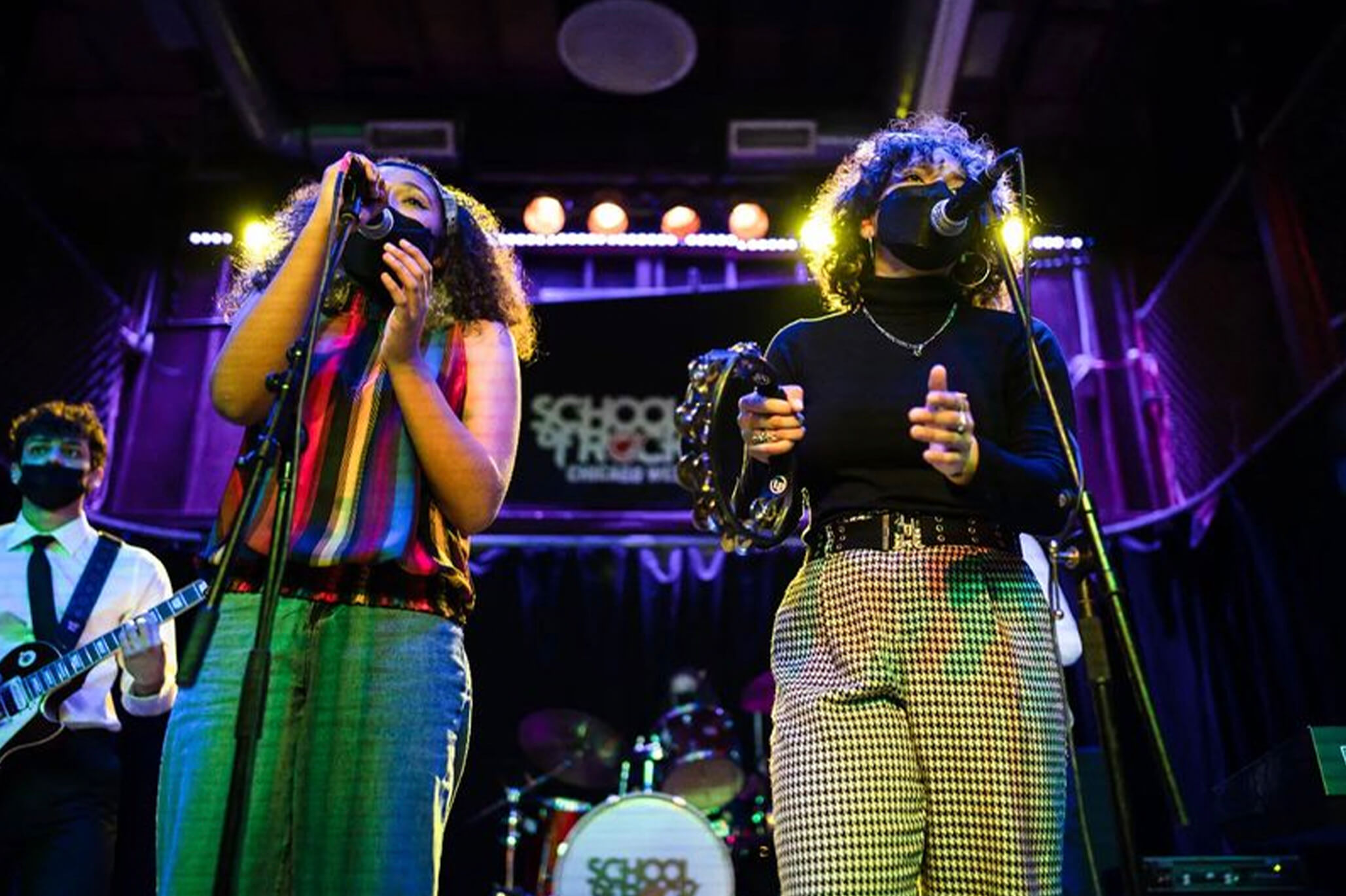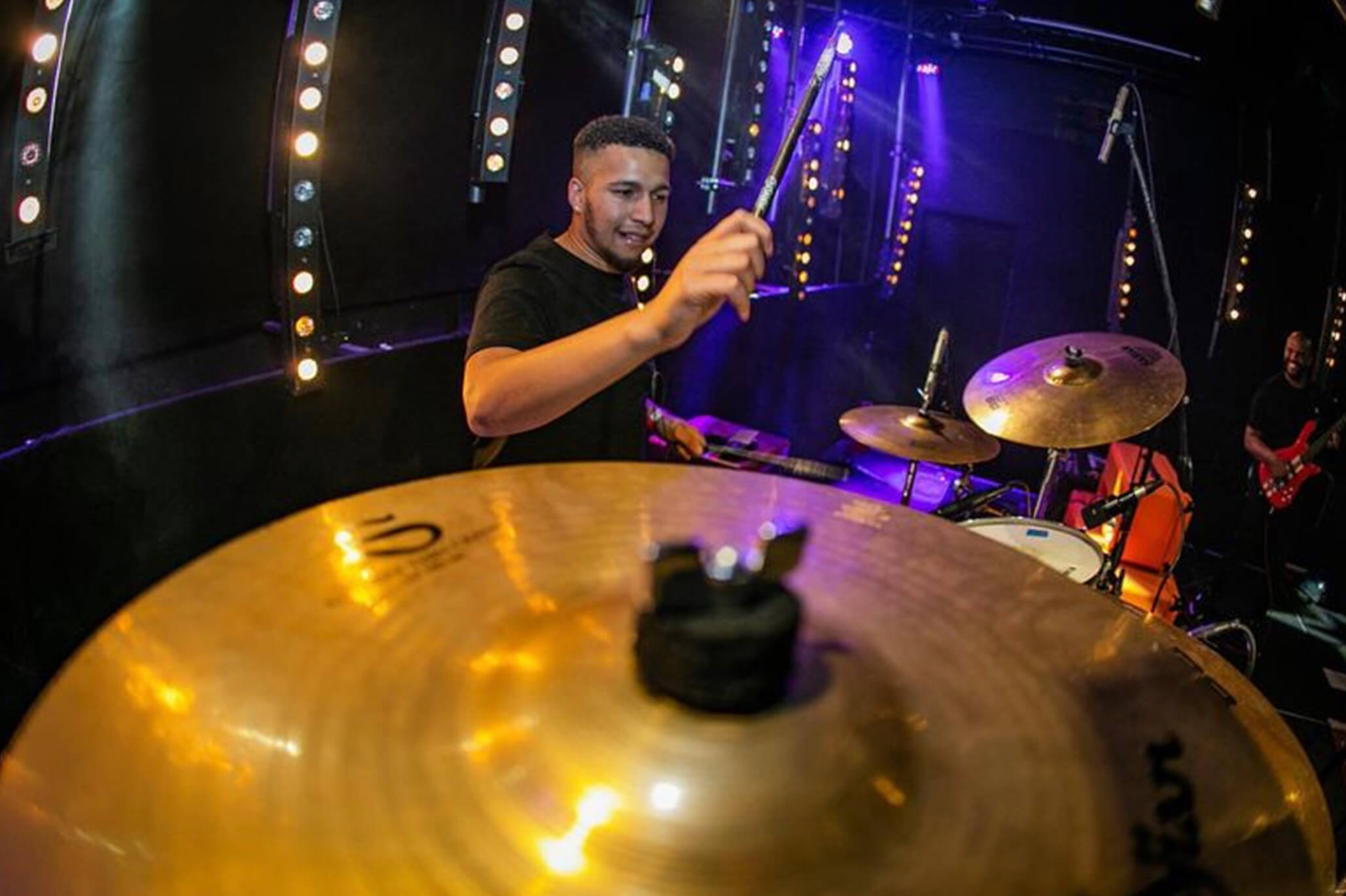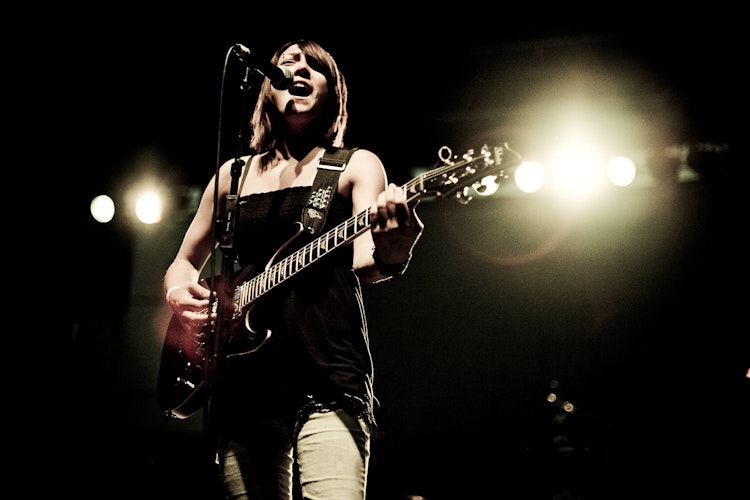Remember the first time you went to a concert and thought, “I want to do that”? Or maybe the show inspired you to practice and write more, or to form a band or pick up an instrument for the first time. Think about some of the most memorable concerts you ever attended. Which bands would you pay almost any amount of money to see? Now think, what is it about those bands or shows that really stood out to you? What would you like to take from that and add to your own performances? What is the power of stage presence? How can it affect the quality of a show and the audience’s experience? Why is it beneficial to assess your performance?
In this article we will discuss all of those questions and define what good stage presence and a good performance is by looking at examples of some of the greatest performances of all time. Also, we’ll discuss strategies, tips and tricks that you can start working on today.
So, what is a good stage performance? A good stage performance is when you and your band feel comfortable enough to have fun on stage, and connect with your audience. And of course, being able to play the material, but that goes without saying.
What is a good stage performance?
Queen's Live Aid performance in 1985 is considered one of the greatest live performances of all time and “can now officially be claimed as the world’s favorite live performance” according to ticketsourse.com, with “136,901,330 total YouTube views, 4,812,000 annual YouTube searches, and 1,427,500 annual Google searches.” (The World's Greatest Live Performances by Andrew Stuckey)
So, what made it so great?
- They had a comedian crowd warmer. Pro tip: run your jokes by your friends before your audience.
- Right from the start the band was engaging and inviting the audience to be a part of the experience.
- With so many factors and variables, it’s okay to adjust your singing and playing to a way that works for the live performance, not just sticking to the way the recording sounds. This performance clearly has some variations from the original recording, but they are still communicating with each other to stay in sync.
- The band moves around the stage. They don’t just stand there (except for the drummer, of course).
- They have smooth, planned transitions between songs.
- They have interactive moments for the audience. And the band interacts with each other.
- If they were having a bad day you wouldn’t know it because the band looks enthusiastic to be there.
Check out a video of this performance to see what else you notice that makes Queen stand out as musicians and entertainers.
Let’s look at another example.
Jimi Hendrix’s performance at the first Woodstock is the greatest performance of all time according to Billboard. It’s difficult to find footage of the full set, but let’s look at what made this performance so great.
- Style, style, style. Can’t get enough of that 1960s/’70s rock ‘n’ roll style. OK, back to the music.
- Movement. The whole band is really grooving. No one is just standing there.
- A strong skill that Jimi and the band bring is the ability to perform freely whether soloing, playing prepared songs or jamming.
- They are all 100% present and engaged in the moment.
- At times Jimi engages with and thanks the audience.
Check out Jimi’s and other performer’s sets from the first Woodstock to see what made them stand as musical icons of the time.
Let’s look at one more example.
Rock & Roll Hall of Famers, Sly and the Family Stone, at the Harlem Cultural Festival in 1969.
- This performance has a little different approach. The band “jams” their way into the first song.
- Each band member is located for equal visibility by the audience and has a feature moment.
- Five of the seven band members sing.
- Of course movement and being present in the moment.
- One of the band members goes back and forth from singing to playing the trumpet. What a pro!
- Is fringe back in again yet?
Check out Sly’s and other performer’s sets from the Harlem Cultural Festival to see what made them stand as musical icons of the time.
How to perform great on stage
Think “PAV” (pronounced “pave”)!
Practice
- Plan time to practice, and identify what you plan to accomplish during practice.
- Be honest with yourself about how prepared you are and what you still need to work on.
- Write out the song structure in a way that makes sense to you.
- Practice in different rooms so that you don’t get attached to one specific set up.
- Practice moving, choreographies, planned staging, etc.
- Practice for endurance. If you have a 45-minute, hour-long or two-hour long set, at the very least, you’re going to want practice for that amount of time. Or, play through the set without taking a break.
- Listen to the song a million times. And then a couple of more times on the day of the show.
Always:
- Gather everything you will need for the show the day before.
- Take a deep breath once you get on stage, place and set your gear how you need it to be.
- Stay in tune with your band mates to know when everyone is ready to start.
- Stay in tune with your band mates throughout the song and show to pick up on cues and to stay in time together.
- Have some sort of warm up. Going on stage cold and stiff stinks.
- Have everything memorized. You CANNOT perform or express yourself if you’re having to think about how to play or sing the song.
- Wear some sort of ear protection. Pro tip: figure out which kind of hearing protection works best for you and bring several kinds to the show. Sometimes what works in the rehearsal space won’t work as well in different types of venues and stage setups. Either way, don’t end your career early by blowing out your ears.
Visualize
- Visualize the stage and play through your songs.
- Wear something special when you perform. No one wants to see you in lounge wear. Wearing something cool for a show will make you feel better, too.
- Practice in the outfit you plan to wear several times. Pro tip: Don’t wear anything you are constantly going to have to adjust. That will be distracting to you and your audience. Also, what might look fine when you're standing face to face with someone, might not work when you're up on stage.
- Film your practices. You might notice something you want to do differently.
Worried about stage fright? Check out our article on how to overcome stage fright for some helpful tips.
Remember, playing music with your band and performances of any kind is fun! Even if you feel a little anxious, part of the fun is channeling that energy into your performance and discovering a new side of yourself.

Stage performance tips and tricks:
- Interact with the audience. If you’re feeling intimidated about looking at the audience, look just above the back row. It still looks like you’re looking at the audience. Maybe even wave to your imaginary friend.
- Have a stage persona. Many famous performers have a stage persona or a stage name. Some performers like to become a more elevated version of themselves. Some like to take on a full persona like David Bowie as Ziggy Stardust, Beyoncé as Sasha Fierce, and Vincent Damon Furnier as Alice Cooper. Even if you are comfortable with just being your everyday self on stage, make sure you are the entertainer version of yourself.
- Interact with the other members of the band.
- Consider the energy flow and dynamics of your setlist.
- But how do I have fun if I’m feeling anxious? Do something crazy! But within reason. Have a prop of some sort. The Flaming Lips often go out into the crowd in an inflatable bubble. You obviously can’t do that. But here’s an idea: one of the Allstars bands had beach balls and a blow up palm tree that they threw out into the crowd.
- Read the room. Know your audience. Does your audience look like they want to have their ears blown out (while wearing ear protection, of course)? Or is it a group that might appreciate a moderate sound level?
- Have a soundcheck song that is not from your set list. And, do some sort of sound check or line check. You don’t want to spend your first song or two figuring out levels using some sort of non-universal sign language. AND, don’t play the main riff or groove of your song right before you play the song.
- Always support your friends’ bands. When the other groups are playing, set an example by standing upfront. Then, not only will other people join you, but your friends will do the same for you.
- Be respectful to the person running sound.
- It’s not all about you. It is about you, but it’s not ALL about you. Enjoy the experience together.
Additional tips for vocalists
- It can feel isolating up there front and center. Watch videos of your favorite singers to get ideas for what you can do. If you’re really struggling, hold the mic handle in one hand and the mic cable in the other (make sure to check for tangles and the length of the cable). Then move to the music. Walk from one side of the stage to the other. Go say “hey” to the guitar or bass player. When it’s a song everyone knows, hold the mic out over the crowd so they can sing along.
- Write out your lyrics on paper over and over and over again until you don’t have to stop and think about it.
- Step back if someone is playing a solo.
- Really think about the lyrics and what they mean to you, and express that when you perform.
Don’t forget to warm up ahead of time! Check out our guide to vocal warm-ups for singers for some ideas

Additional tips for guitar and bass players
- Step forward if you’re playing a solo.
- Triple check that case to make sure you have everything.
- Don’t forget to tune before going on stage and check your tuning between songs. Some people like to have their tuner attached to the headstock facing backwards so they can discreetly check their tuning throughout the show. Some people have a tuner on their pedal board.
- Try to look up at the audience rather than down at the guitar or bass.
Need some help tuning like a pro? Check out our article about tuning guitars for some tips.
Additional tips for keys and piano players
- Triple check that case to make sure you have everything.
- Finger warm ups!
- Try to look up at the audience rather than down at the keyboard.
- Just because you’re playing a more formal instrument doesn’t mean you can’t groove.
Check out videos of these School of Rock performances and recordings. Grooviest piano players ever!
Additional tips for drummers
- Having a hard time remembering the tempo for the next song? Take a deep breath and sing the chorus in your head.
- Be careful about wearing wide bracelets, wide-open long sleeves, long necklaces or fringe. Keep your space free for movement.
- Literally have a list of everything you need. Don’t be that person that needs to borrow a snare stand, or worse.
- Try to look up at the audience rather than down at the drums.
Need some help tuning your drums? Check out our guide to how to tune your drums.

Improve your stage performance skills with jam sessons
Jam sessions are a great way to meet other musicians, challenge yourself, gain confidence on stage, and depending on the scenario, write new songs. Here are some things to think about when joining a jam session.
- Go for it! You might feel nervous or intimidated by the other players, but as long as you’re cool and respectful they’ll be glad for you to join them.
- Pay close attention to the other musicians for cues, changes and times to solo or blend.
- Be positive and open minded.
- Be respectful of the person running the session. You want to create a reputation as someone who’s good to work with. If you don’t like the way the jam is being run, you can host your own session at a different location.
So, how are you feeling? Hopefully you're able to apply some of these strategies and tricks to your next performance, and you’re feeling inspired to get on stage. As a matter of fact, why not write down 4-6 ideas you learned from this article and write out how you plan to use them for your next performance? Writing things down is a great way to take action and remember what you have learned. There are obviously other methods that bands and entertainers use to entertain their audience. But, in this article we wanted to focus on strategies for a basic stage performance.
Ready to take your stage performance skills to the next level?
If you’re intrigued by all of this but don’t play an instrument or have a performance art, check out our School of Rock music programs. School of Rock is a music school for all skill levels, ages, and musical aspirations. The Performance Program is School of Rock's hallmark music program. Utilizing the patented School of Rock Method, the Performance Program consists of a weekly group rehearsal where students learn by playing rock music's most iconic songs with a band composed of their peers. Students are assigned songs and parts that are tailored to them based on their age, experience, and ability to learn new skills and concepts. Students then work through their parts in weekly private music lessons, and refine the skills and concepts that those songs introduce. The goal of this curriculum is to prepare students for live performances. Every few months, Performance Program students take the stage and play at local music venues in front of a live audience.
About The Author:
Katie Farmer is the General Manager at School of Rock Santa Clarita. Katie has been with School of Rock since 2015 as a studio coordinator, drum teacher, show director, and tour coordinator for five School of Rock AllStar tours. She has been on stage and behind the scenes all her life through theatre, film, dance and music.



